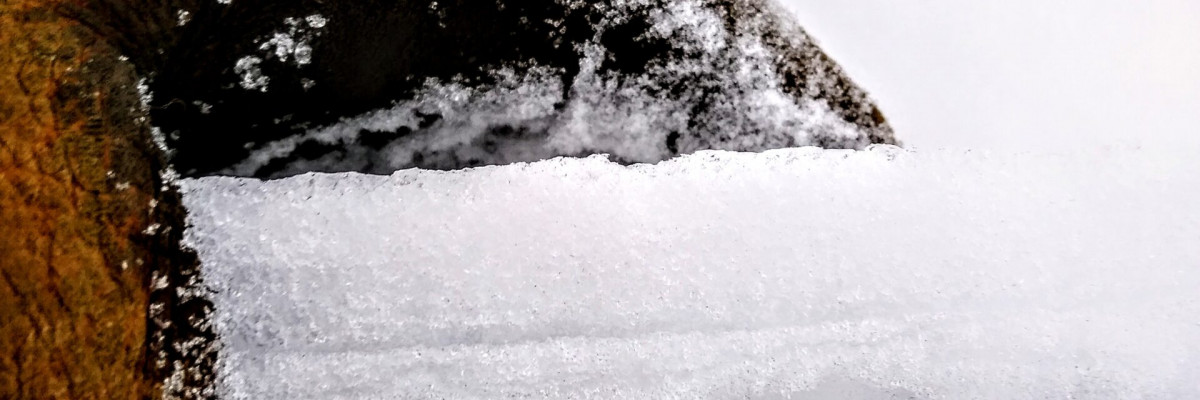This is Travis Craft with an early season snowpack update, on November 26, 2019.
We want to convey our sincere thanks to the volunteers, board members, sponsors, and everyone who joined us at the 13th annual Pray For Snow Party! Our major fundraising event of the year was a success! The funds raised will help cover the expenses for the avalanche forecasts and education programs for the region. Again, thank you for your continued support.
A melt-freeze base exists in the upper elevations (7000’+) of the northern forecast area (Mission, Swan, and Rattlesnake). A significantly thinner snowpack exists in the southern forecast area (Bitterroot). Upper elevation snow has gone through several melt-freeze cycles, and rain on 11/17 reached up to 9000′. In some areas, rain and melt-freeze crusts are exposed, resulting in “slide-for-life” conditions. Icy, slick crusts present an objective hazard to travelers and have created a very slick interface/bed surface for future avalanches.
New snow has been trickling in, up to several inches in the upper elevations. Moderate to strong winds have been transporting this snow and creating wind slabs on leeward terrain. Wind slabs are the primary avalanche concern, up to D2 in size (large enough to bury, injure, and/or kill a person).
New snow is the secondary avalanche concern. Loose snow avalanches are most likely. However, storm slabs may form if we receive more snow than what is currently forecast. The slick bed surface could make storm slabs very reactive to human triggering. Assess conditions and reactivity throughout travel; use formal (compression and extended column) and informal tests (hand shears, small test slopes). Pay attention to red flag data.
- Recent avalanche activity
- Cracking or collapsing snowpack
- Heavy snowfall
- High winds
- Rapid increase in temperature
In the upper elevations (above 7000′), where a significant snowpack exists, deeper instabilities have generally been neutralized by warm temperatures and rain followed by a stabilizing re-freeze. The danger for persistent slab instabilities deeper in the snowpack is currently low.
Light snow is forecast for the next week with potentially strong wind. This will likely increase the avalanche hazard.
Early season conditions exist throughout the forecast area: rocks, stumps, and fallen trees increase the consequences for trauma if caught in an avalanche.
Careful terrain management and snowpack assessment is essential for safe backcountry travel.
If you get out into the backcountry, please share your observations on our public observation page.
Ski and ride safe.
























